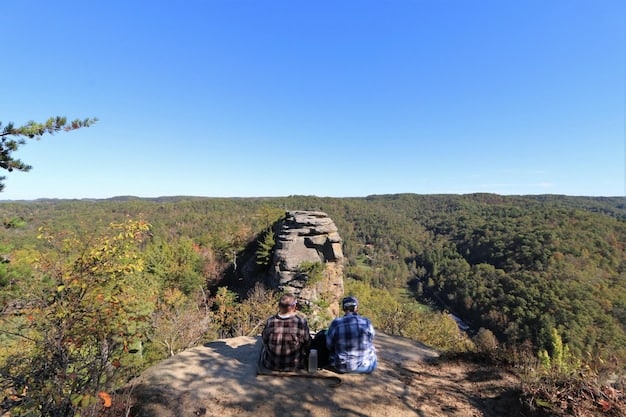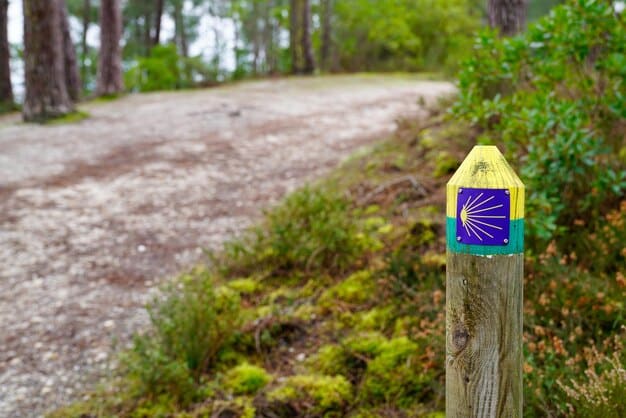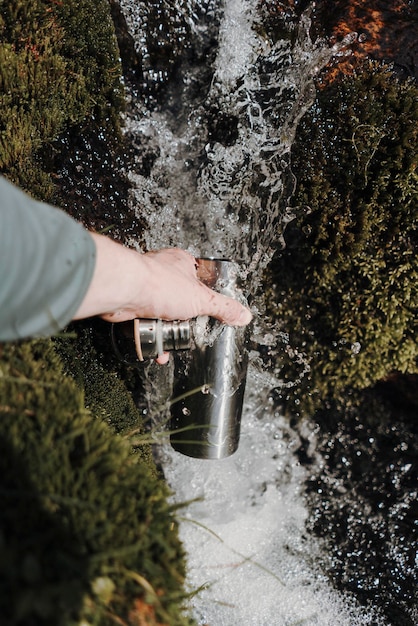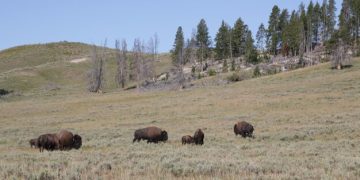Minimize Your Environmental Impact: A Guide to Visiting National Parks

Minimize your environmental impact while visiting national parks by adopting practices such as sticking to marked trails, properly disposing of waste, using reusable items, respecting wildlife, and supporting sustainable initiatives to preserve these natural treasures for future generations.
Visiting national parks is a fantastic way to connect with nature, but it’s also essential to be mindful of our environmental impact. Here’s how you can minimize your environmental impact while visiting national parks, ensuring these beautiful spaces remain pristine for future generations.
Plan Ahead and Pack Responsibly
Before you even set foot in a national park, you can make eco-conscious choices. Proper planning and responsible packing are key to reducing your footprint.
Research Park Guidelines
Each national park has unique regulations and guidelines designed to protect its specific ecosystem. Familiarize yourself with these rules beforehand.
Pack Light and Smart
Bring only what you need to reduce weight and potential waste. Prioritize reusable items and eco-friendly products.
- Bring reusable water bottles and coffee cups to avoid single-use plastics.
- Pack snacks in reusable containers instead of using plastic bags or wrappers.
- Choose biodegradable toiletries and sunscreen.
Planning ensures you are prepared for the specific environment of the park and helps you minimize unnecessary waste. By understanding the park’s guidelines and packing responsibly, you set the stage for an eco-friendly visit.
Stick to Marked Trails
One of the simplest yet most effective ways to protect national parks is to stay on designated trails. This prevents erosion and protects delicate vegetation.

Avoid Cutting Switchbacks
Cutting switchbacks may seem like a shortcut, but it can cause significant erosion and damage to the surrounding landscape.
Protect Vegetation
Staying on trails helps preserve native plants and prevent soil compaction, which can hinder plant growth.
- Keep a safe distance from the edges of trails to protect fragile vegetation.
- Avoid trampling wildflowers or other plants.
- Respect any trail closures or rerouting signs designed to protect the environment.
By sticking to marked trails, you contribute to the long-term health of the park’s ecosystem. Staying on the designated paths maintains the natural integrity of the surroundings.
Manage Your Waste Properly
Proper waste disposal is crucial to minimizing pollution and protecting wildlife in national parks. Always pack out everything you pack in.
Carry Out All Trash
Never leave any trash behind, even if it seems insignificant. Small items like wrappers and cigarette butts can have a big impact on the environment.
Use Designated Bins
If there are designated trash bins, use them. If not, carry your trash with you until you find a proper disposal facility.
Be Mindful of Food Waste
Dispose of food scraps properly. Avoid leaving food behind that could attract wildlife or contribute to pollution.
- Use resealable bags or containers to pack out food waste.
- If composting is available, use it responsibly.
- Never feed wildlife, as this can disrupt their natural behaviors.
Managing your waste responsibly ensures that the park remains clean and safe for both visitors and wildlife. Proper disposal practices protect the delicate ecosystems within the park.
Respect Wildlife and Their Habitat
National parks are home to a diverse array of wildlife. It’s essential to observe them from a distance and respect their natural habitat. Never interact with or feed the animals, as this can disrupt their natural behaviors and ecosystems.
Keep a Safe Distance
Observe wildlife from a distance to avoid stressing or disturbing them.
Avoid Feeding Animals
Feeding animals can make them dependent on humans and disrupt their natural foraging habits.
- Store food properly to prevent attracting animals to your campsite or picnic area.
- Never approach or attempt to touch wild animals.
- Report any instances of wildlife harassment to park authorities.
Respecting wildlife and their habitat is crucial for maintaining the natural balance within the park. Distancing yourself from animals ensures their safety and your own.
Conserve Water and Energy
Water and energy conservation are essential for reducing your environmental impact in national parks. Use resources wisely and minimize waste.

Use Water Wisely
Conserve water by taking shorter showers, using water-saving devices, and avoiding unnecessary water usage.
Conserve Energy
Use energy-efficient appliances and lighting, and turn off lights and electronics when not in use.
Choose Sustainable Accommodations
If staying overnight, opt for eco-friendly lodging options that prioritize sustainability.
- Look for accommodations with energy-efficient lighting and appliances.
- Choose accommodations that have water conservation in place.
- Inquire about the property’s recycling program and participate in it.
Conserving water and energy helps reduce the park’s overall environmental footprint. By adopting sustainable practices, you support the park’s conservation efforts.
Support Sustainable Initiatives
Many national parks and local communities offer sustainable initiatives to help protect the environment. Support these efforts by participating in volunteer programs, buying local products, and making informed choices.
Participate in Volunteer Programs
Volunteer your time to help with trail maintenance, cleanup efforts, or other conservation projects.
Buy Local and Sustainable Products
Support local businesses that prioritize sustainability and offer eco-friendly products.
- Purchase souvenirs made from recycled materials.
- Support local farmers and producers by buying locally sourced food.
- Choose tour operators that follow sustainable tourism practices.
Supporting sustainable initiatives helps to strengthen the park’s conservation efforts. By participating in volunteer programs and supporting local businesses, you contribute to the long-term health of the park.
Be Mindful of Transportation
Transportation can have a significant impact on the environment due to emissions and congestion. Opt for eco-friendly transportation options whenever possible.
Use Public Transportation
Take advantage of shuttle services and public transportation within the park to reduce traffic and emissions.
Bike or Hike
Explore the park by bike or foot to minimize your carbon footprint and enjoy a more immersive experience.
- Plan your route in advance to ensure it is suitable for biking or hiking.
- Follow trail etiquette and yield to other users.
- Bring necessary safety gear such as helmets and appropriate footwear.
Mindful transportation choices reduce traffic and emissions within the park. By opting for public transportation, biking, or hiking, you contribute to cleaner air and a quieter environment.
| Key Point | Brief Description |
|---|---|
| 🌱 Stay on Trails | Prevent erosion and protect vegetation by sticking to designated paths. |
| 🗑️ Pack Out Trash | Carry out everything you carry in to keep the park clean and protect wildlife. |
| 💧 Conserve Resources | Use water and energy wisely to minimize waste and environmental impact. |
| 🐾 Respect Wildlife | Observe animals from a distance and avoid feeding them to protect their natural habits. |
Frequently Asked Questions
▼
Minimizing environmental impact helps preserve the natural beauty and ecological health of national parks for future generations, protecting biodiversity and ensuring sustainable tourism.
▼
Use reusable water bottles, pack snacks in reusable containers, and carry out all trash. Avoid single-use plastics and dispose of waste properly in designated bins.
▼
Observe wildlife from a safe distance, never feed animals, and store food properly to prevent attracting them. Avoid disturbing their natural habitat and report any harassment.
▼
Use shuttle services, public transportation, bike, or hike within the park to minimize your carbon footprint and enjoy a more immersive experience.
▼
Participate in volunteer programs, buy local and sustainable products, and choose tour operators that follow sustainable tourism practices. Support community efforts.
Conclusion
By adopting these practices, you can significantly minimize your environmental impact while visiting national parks. Let’s work together to protect these natural treasures, ensuring they remain pristine and accessible for generations to come. Every small act of conservation contributes to the larger goal of preserving our planet’s beautiful park systems.





